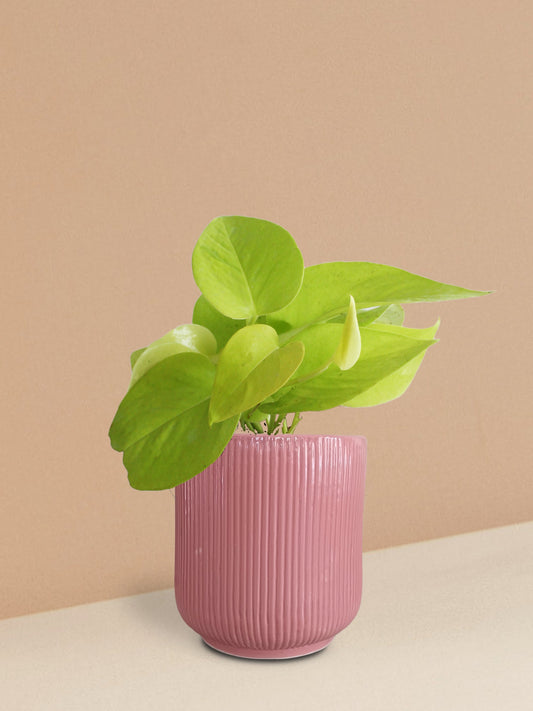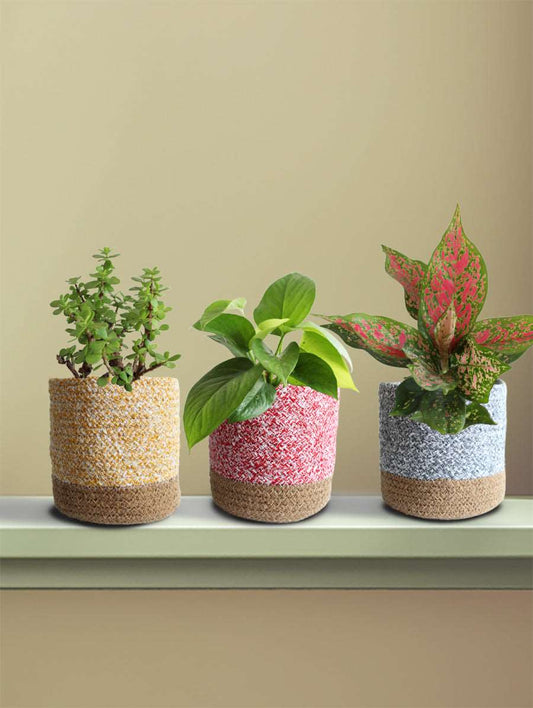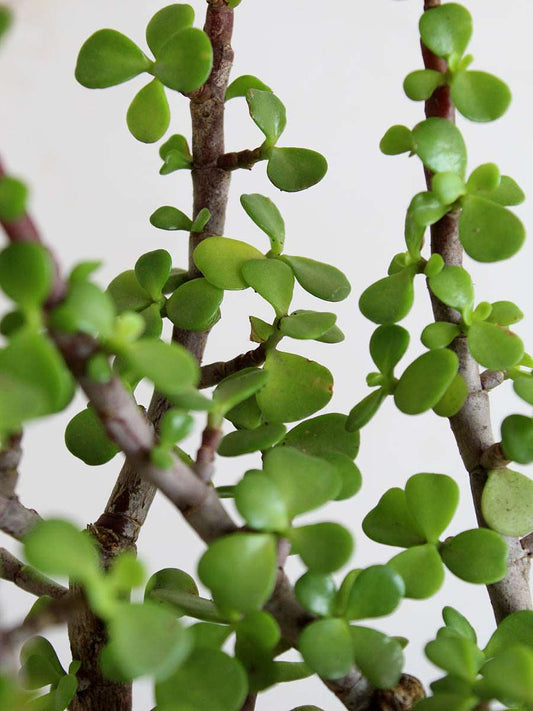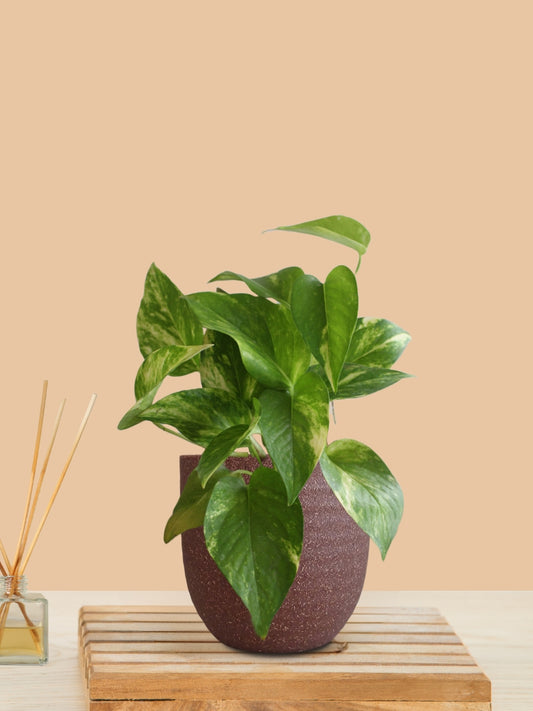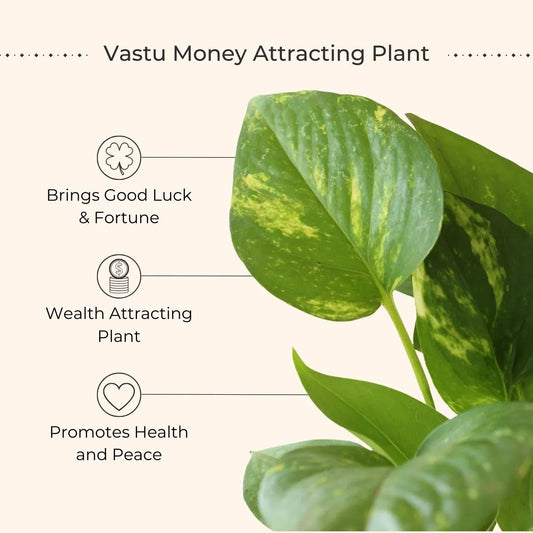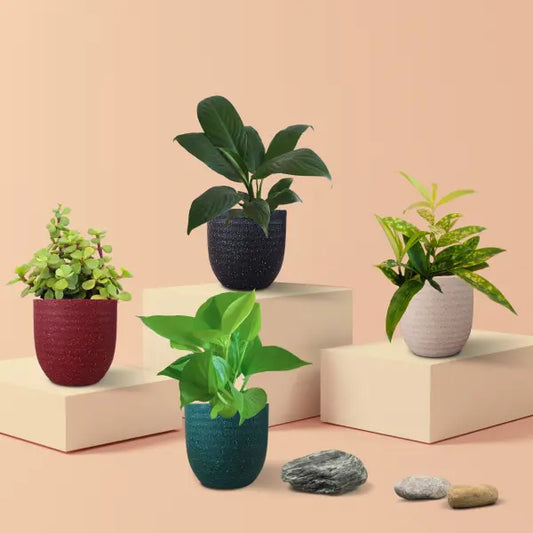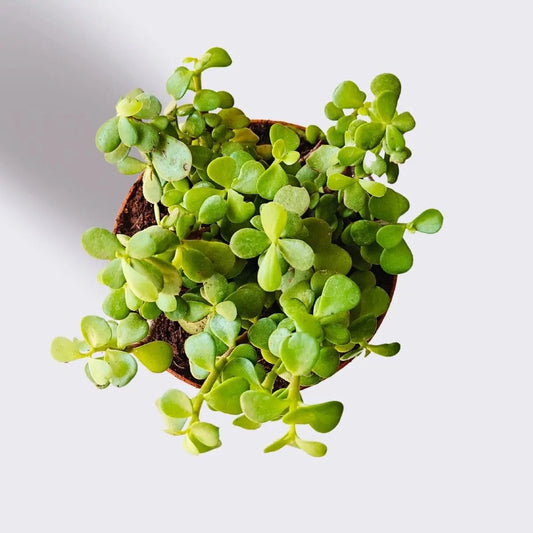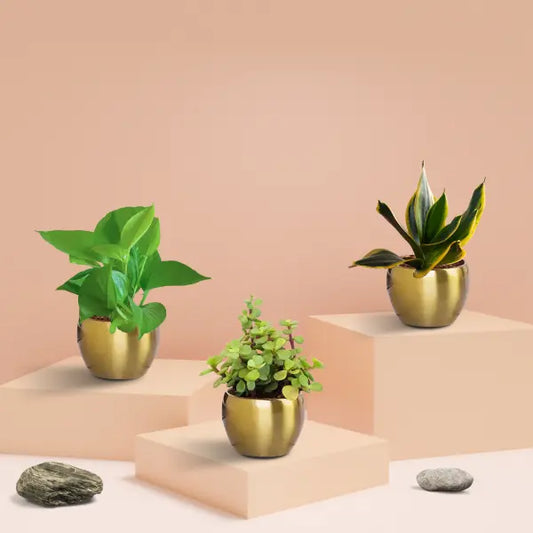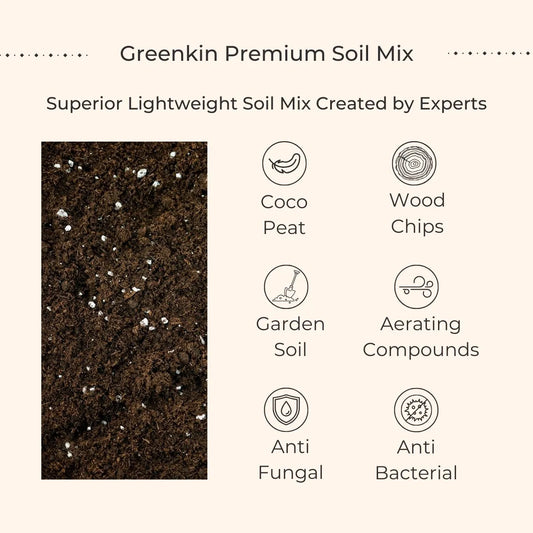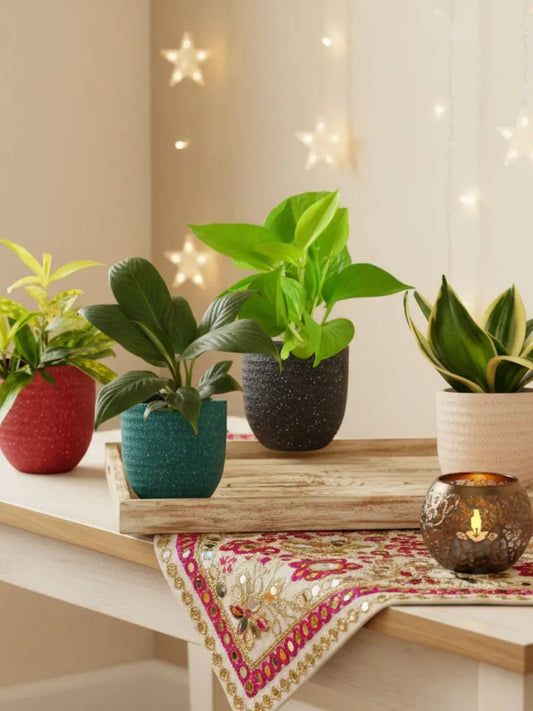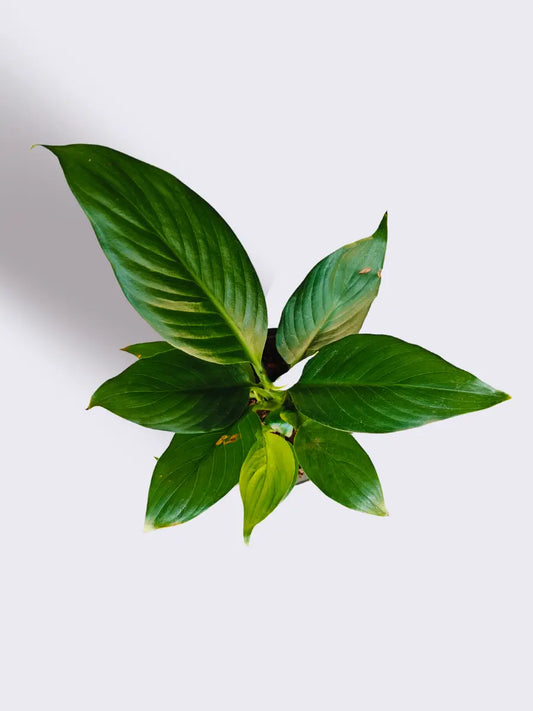
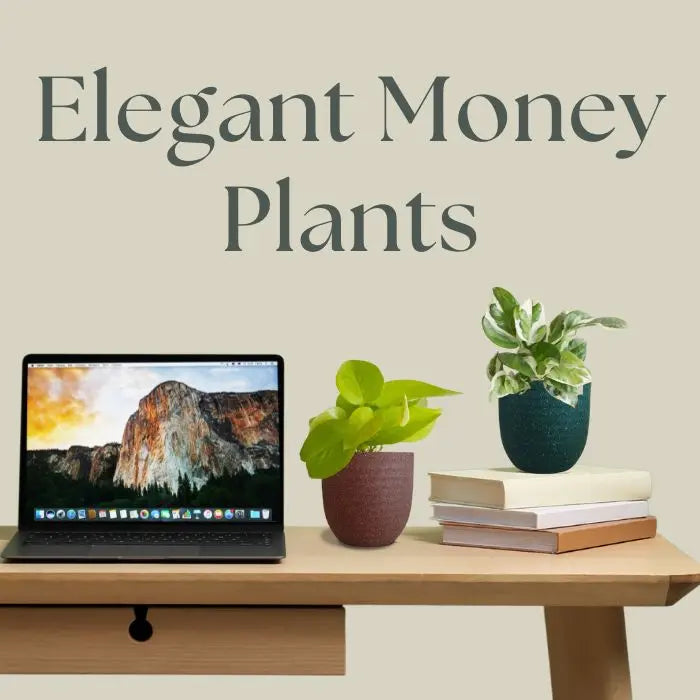
-
Golden Money Plant in Ceramic Pot (Medium)
Regular price ₹ 1,759Regular priceUnit price per₹ 2,199Sale price ₹ 1,759Sale -
Goodluck Charm Easy Care Plants Combo
Regular price ₹ 2,344Regular priceUnit price per₹ 3,349Sale price ₹ 2,344Sale -
Money Plant Gold King (Small) in Eco Pot
Regular price ₹ 299Regular priceUnit price per₹ 499Sale price ₹ 299Sale -
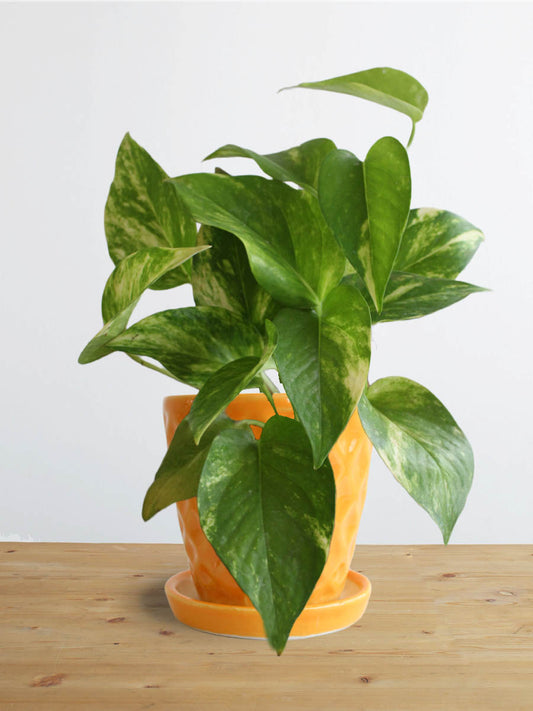
 25% Off
25% OffMoney Plant Gold King (Small)
Regular price From ₹ 599Regular priceUnit price per₹ 799Sale price From ₹ 599Sale -
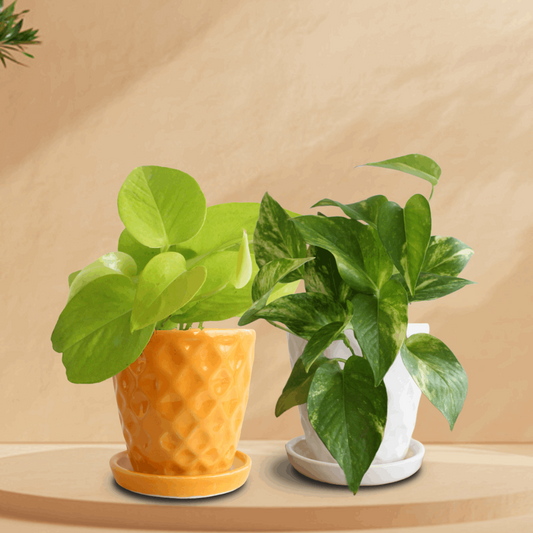
 30% Off
30% OffEasy-peasy Duo
Regular price ₹ 1,364Regular priceUnit price per₹ 1,949Sale price ₹ 1,364Sale -
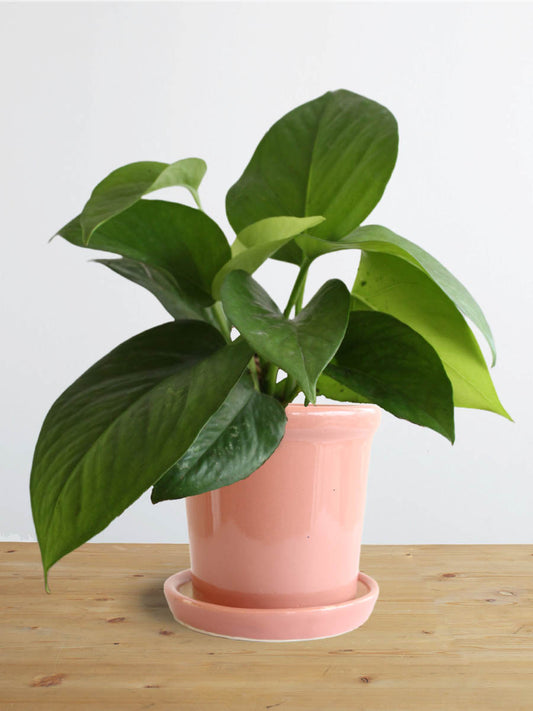
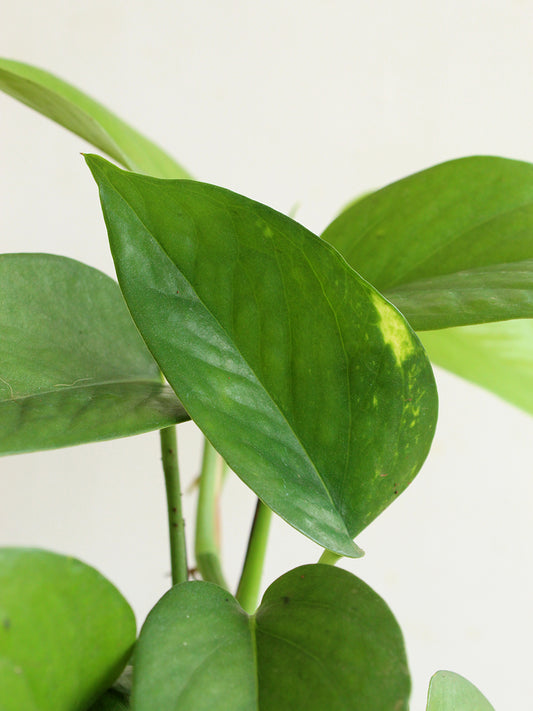 25% Off
25% OffMoney Plant Green (Small)
Regular price From ₹ 561Regular priceUnit price per₹ 749Sale price From ₹ 561Sale -
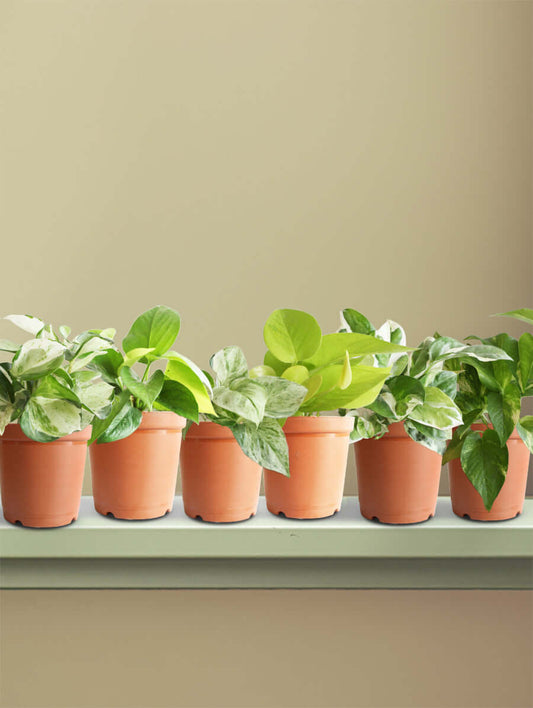
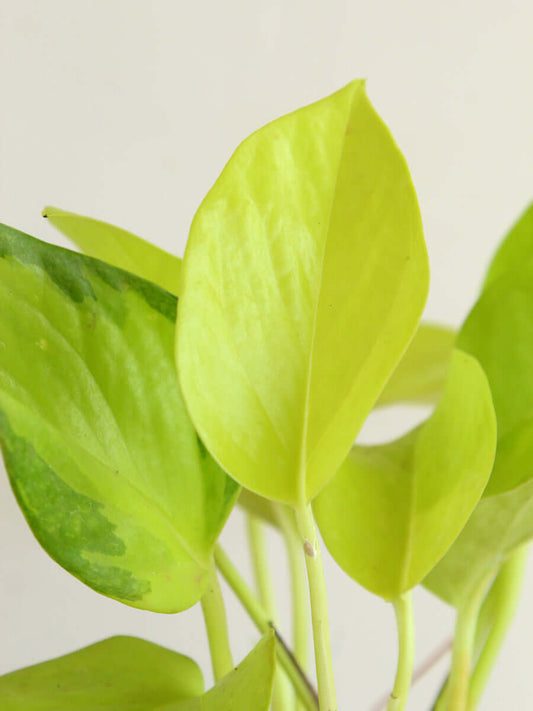 Sold out
Sold outThe Ultimate Money Plant Combo
Regular price ₹ 1,919Regular priceUnit price per₹ 3,199Sale price ₹ 1,919Sold out -
Indoor Plants Combo for Home Decor in Eco Pots (Small)
Regular price ₹ 1,199Regular priceUnit price per₹ 2,199Sale price ₹ 1,199Sale -

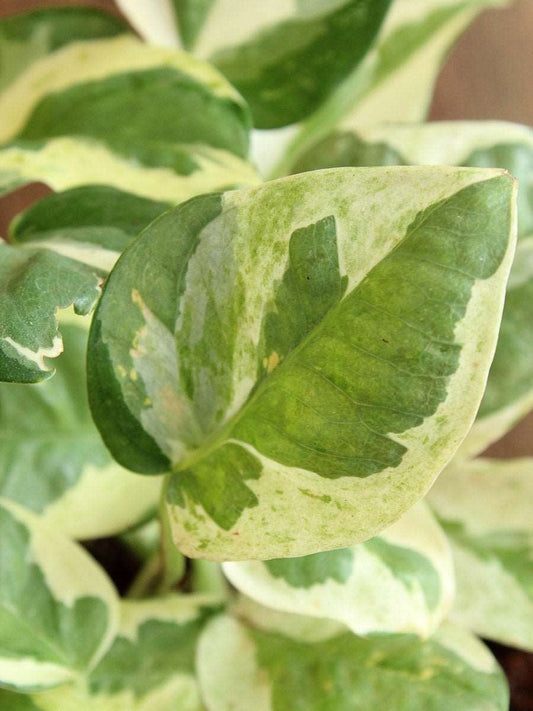 30% Off
30% OffElite Pothos Duo
Regular price ₹ 1,399Regular priceUnit price per₹ 1,999Sale price ₹ 1,399Sale -
Three Plants Combo for Home Decor in Metal Pots (Small)
Regular price ₹ 899Regular priceUnit price per₹ 1,799Sale price ₹ 899Sale -
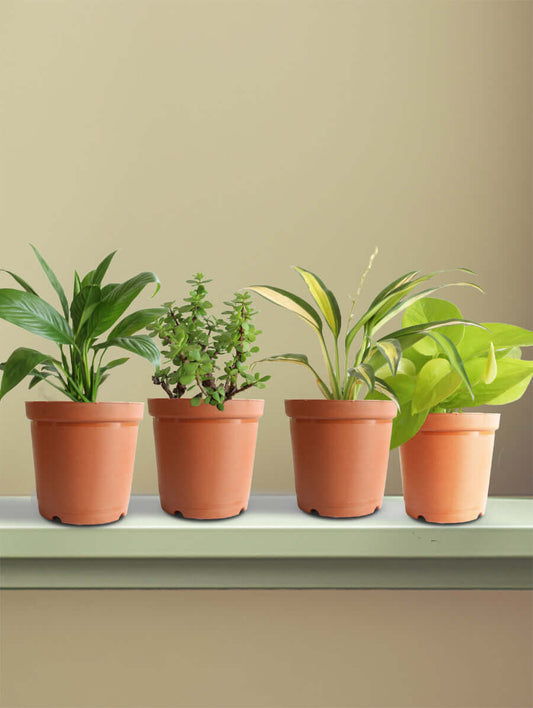
 Sold out
Sold outThe Essential Air Purifying Combo
Regular price ₹ 1,199Regular priceUnit price per₹ 1,999Sale price ₹ 1,199Sold out -

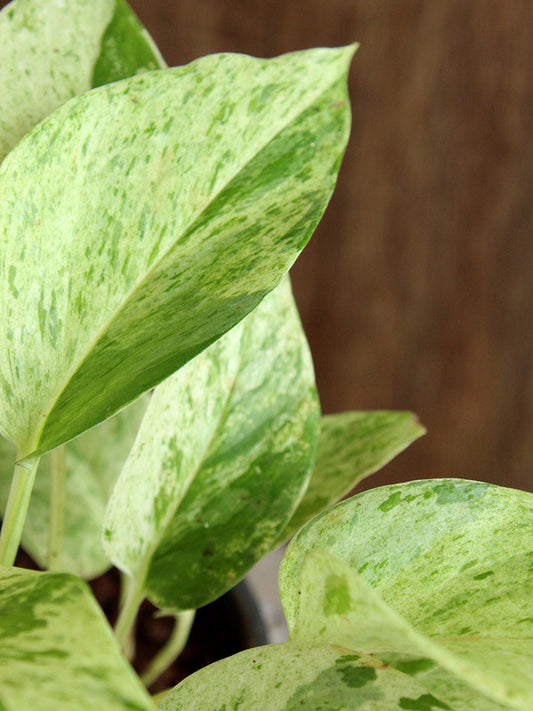 30% Off
30% OffTrouble-free Duo
Regular price ₹ 1,084Regular priceUnit price per₹ 1,549Sale price ₹ 1,084Sale -
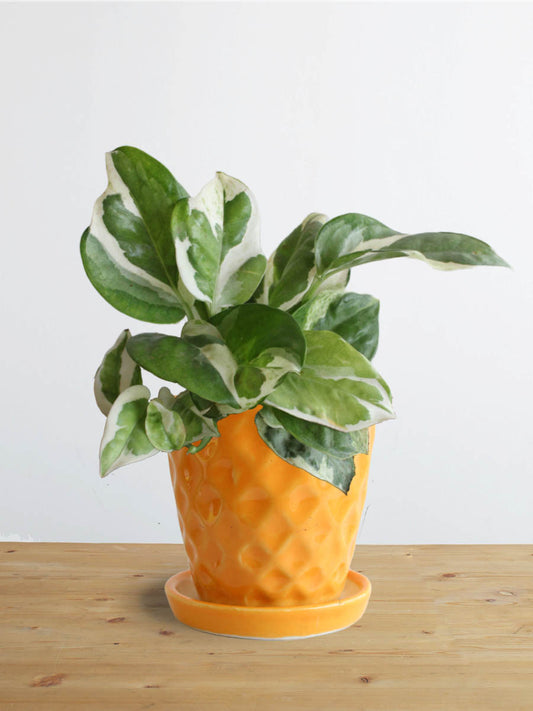
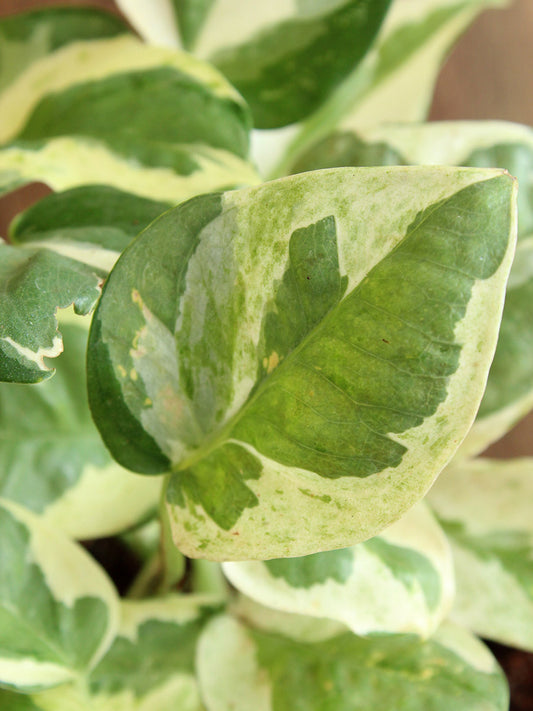 25% Off
25% OffMoney Plant N'Joy (Small)
Regular price From ₹ 599Regular priceUnit price per₹ 799Sale price From ₹ 599Sale -
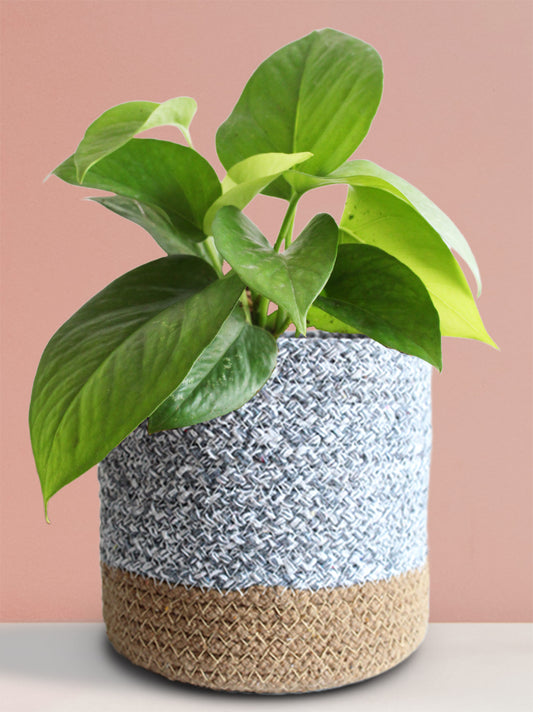
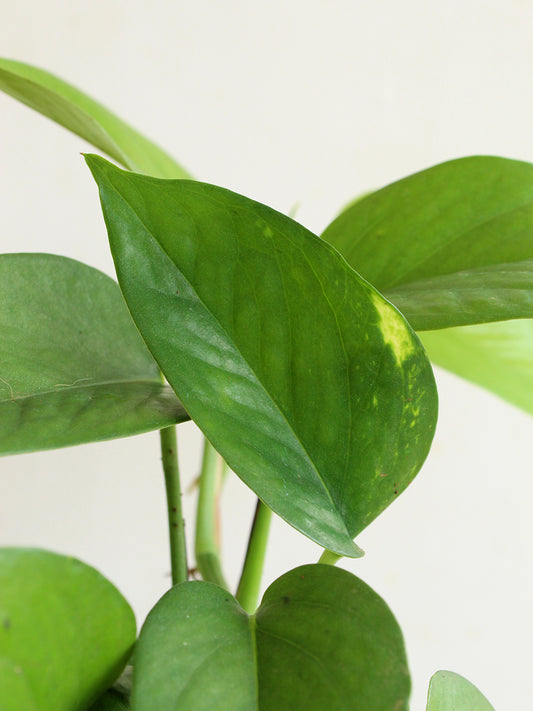 25% Off
25% OffMoney Plant Green (Medium)
Regular price From ₹ 449Regular priceUnit price per₹ 599Sale price From ₹ 449Sale -
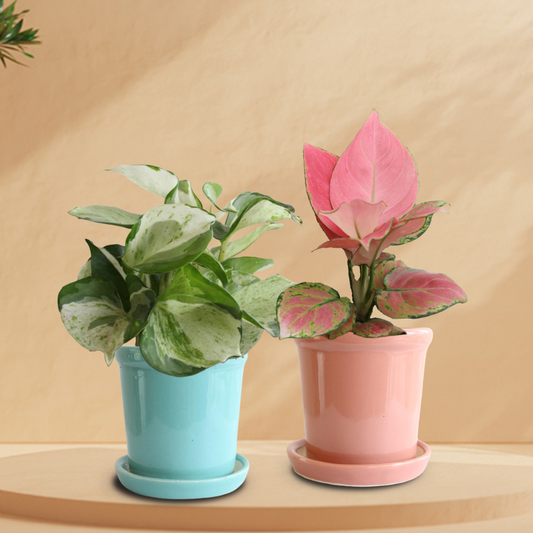
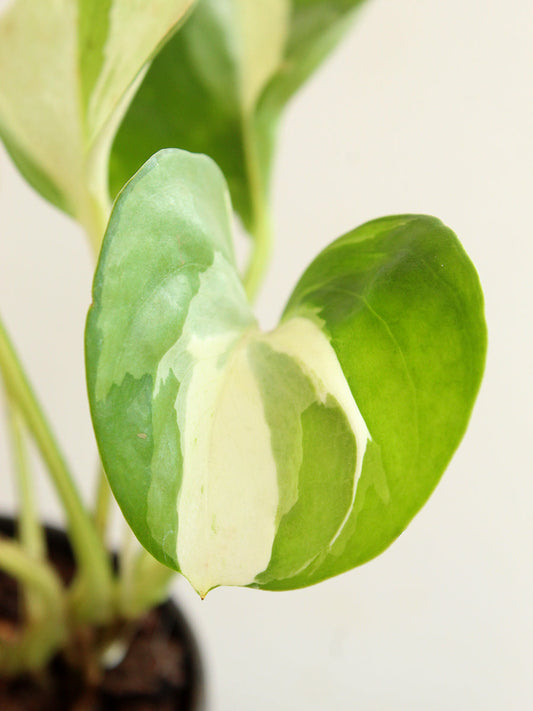 Sold out
Sold outMy Precious Duo
Regular price ₹ 1,329Regular priceUnit price per₹ 1,899Sale price ₹ 1,329Sold out -
Air Purifying Plants Combo for Home in Eco Pots (Small)
Regular price ₹ 1,249Regular priceUnit price per₹ 2,299Sale price ₹ 1,249Sale
Let customers speak for us
Buy Money Plants Online
According to feng shui, a money plant is believed to bring “prosperity”, “good luck” and “abundance”, making it a popular choice as plants for homes and office plants. Thriving in various light conditions and requiring minimal care, the Money Plant is an excellent addition to any space. Moreover, beautiful and symbolic of "wealth" and "luck", make these plants a valuable gift.
Continue to scroll down to find out more about the history, origin, characteristics, benefits, symbolic value, decorating ideas, gift-giving, and more about money plants.
History of Money Plants
Money Plant, scientifically known as Epipremnum aureum, holds a special place in the world of the best indoor plants. Epipremnum aureum, often known as Pothos aureus, is a vine growing up to 20 metres tall. It has been classified into different genera. It was first reported in 1880 and renamed Rhaphidophora aurea in 1962. With thorough examination, the inflorescence was found to be more like Epipremnum pinnatum and synonymized with it. Following a more comprehensive analysis of the leaves, development appearance, and flower spathe morphology, this plant was identified as E. pinnatum and categorised as E. aureum.
Origin and Cultivars of Money Plants
Money plant, a beautiful climbing plant, originated in the rainforests of the Solomon Islands. It inhabits the Araceae family, which also includes philodendrons and calla lilies. Its popular cultivars are available in different colours and leaf designs. The most well-known are 'Golden Pothos', 'Neon', 'Marble Queen', 'Jessenia', including Gold King, N'Joy, Manjula, Marble, Golden, and Green Money Plant. This easy-to-grow vining plant climbs, trails, or bushes depending on its habitat.
Additionally, the money plant produces flowers in a spathe as long as 23 cm when climbing up into a tree. It can grow trailing branches that will root once they reach the ground. Leaves on these trailing stems can grow up to 10 cm long.
Interesting Facts About Money Plants
- The money plant is also called Devil's Ivy because it can survive and grow in harsh environments. Other common names for the money plant include Golden Pothos and Devil's Ivy.
- Throughout “money plant” botanical history, it has been known by several names. Epipremnum aureum was not officially named until recently.
- The money plant rarely blooms, especially indoors. There has only been one confirmed indoor bloom in the last 40 years or so!
- All money plant varieties are toxic in nature. The spiky crystals called raphides can harm pets and people if eaten. These raphides contain a compound called calcium oxalate.so pet friendly plants are necessary.
Significance of Money Plants in Different Cultures
Money plants are more than just visually appealing. They have symbolic meanings among different cultures and are connected to abundance, luck, and positive energy. Explore the different cultural significance associated with the money plant.
- Money Plants in Chinese Culture: Money Plants are prized in Chinese culture, symbolising prosperity and luck, with their heart-shaped leaves believed to attract positive chi and wealth. Commonly placed in homes and businesses, these plants are thought to invite financial well-being in accordance with traditional Chinese beliefs.
- Significance of Money Plants in Indian Culture: In Indian tradition, the Money Plant is considered auspicious (lucky plant) and associated with wealth, often grown in homes to attract financial success. Venus is the ruler of the southeast direction, which is where Lord Ganesha is oriented, hence it is said that planting a money plant in the southeast corner of a home can increase prosperity and bring good luck. According to Vastu, Venus increases wealth and opportunity, whereas Ganesha absorbs the Vastu dosha.
- Feng Shui Significance of Money Plants: Feng Shui enthusiasts recommend Feng Shui plants like Money Plants for their ability to attract positive energy and financial prosperity. Specific placements, such as in the wealth corner, are thought to enhance the overall financial well-being of a space.
- Money Plants in Greek Mythology: Money Plants hold a connection to Greek mythology, associated with Dionysus and the transformation of Ampelos into a vine. The climbing nature of the Money Plant may evoke this mythological tale, adding a touch of ancient symbolism.
- Eastern Asian Traditions involving Money Plants: In Japan, Money Plants are believed to bring good luck and prosperity, making them a popular choice in homes. Similarly, in Malaysia, the plant is placed to attract positive energy and financial abundance in line with Eastern Asian traditions.
- Western Symbolism of Money Plants: Known as Devil's Ivy in Western cultures, Money Plants are valued for their resilience and adaptability. While not explicitly associated with wealth, their popularity in homes and offices speaks to their aesthetic appeal and ease of care.
- Symbolism of Money Plants in Interior Design: Globally, Money Plants have become symbolic elements in interior design, chosen for their lush green foliage and decorative qualities. Appreciated beyond cultural connotations, these plants enhance the aesthetic appeal of spaces worldwide.
Types of Money Plants (Pothos)
Here are some of the most popular varieties of money plants (money plant types) that are great for indoors:
- Money Plant Gold King: The Money Plant Gold King is a beautiful variant with glossy, heart-shaped cream-coloured variegation foliage in a regal gold tint that gives elegance to indoor spaces. Its vibrant colouration and low-maintenance nature make it a popular choice for both seasoned and novice plant enthusiasts.
- Money Plant N'Joy: The Money Plant N'Joy is a best money plant type that admired for its striking display of vine foliage featuring heart-shaped bright green with cream splash leaves, despite having smaller leaves than other varieties in the group. This adaptable plant, which can grow in all kinds of lighting conditions, is symbolic of prosperity and good fortune.
- Money Plant Manjula: The Money Plant Manjula is a renowned trailing vine for its beautifully patterned leaves, which feature heart-shaped leaves with creamy-white streaks. This variety is known for its adaptability and ability to flourish in indirect sunlight, making it an ideal choice for homes and offices.
- Money Plant Marble: The Money Plant Marble is recognized for its marbled foliage, blending shades of green with lighter tones. Its robust growth and resilience make it an excellent choice for enhancing indoor spaces, while its air-purifying qualities contribute to a healthier environment.
- Money Plant Golden: The Money Plant Golden is a visually stunning addition to any environment, with leaves that have a mesmerising golden tint and a bright green tone, giving the foliage a neon-like appearance. This variety requires minimal care while providing a touch of glamour and prosperity to its surroundings.
- Money Plant Green: A classic among Money Plant varieties, the Money Plant Green is valued for its lush, deep green foliage. This adaptable and hardy evergreen tropical vine is known for its ability to thrive in diverse conditions, making it a popular choice among beginner and experienced gardening enthusiasts.
- Money Plant Satin: The Satin Money Plant is a tropical vine with beautiful, large, deep green, silver-grey-spotted foliage. This low-light, low-maintenance money plant variety looks great on a table, bookshelf, or hanging basket at home or the workplace.
Benefits of Having Money Plants
Money Plants are beautiful and popular houseplant species that provide numerous benefits. Buy a money plant today and enjoy the following benefits:
- Air Purification Benefits of Money Plant: Apart from their monetary symbolism, money plants (pothos) are recognized by NASA for their air-purifying properties. These air-purifying plants function as a natural air purifier by efficiently removing air pollutants from modern furniture and cleansers. Furthermore, the plant actively filters air and increases oxygen intake, distributing positive chi (energy) to every area of the space.
- Money Plants are Great for Stress Reduction: Studies suggest that spending time with nature, even in the form of indoor plants like money plants (pothos) or regular money plant care, can alleviate stress and promote a sense of well-being.
- Money Plants Bring Luck and Positive Energy: Many cultures believe that money plants (pothos) bring good luck and positive energy. Whether as a superstition or a genuine belief, having a money plant is often considered a charm for good fortune. Placing them strategically in your home is believed to attract wealth and prosperity. Vastu's recommendations about the arrangement of money plants ( southeast direction) in a home are quite similar to Feng Shui principles.
Grow & Care Guide - What to Avoid and Adopt:
Money plants, sometimes known as Pothos, are hardy, and easy-to-grow plants that may thrive in many different environmental conditions. Simply learn basic care guidelines on what to do and what not to do while taking care of your money plant for optimum, healthy development.
What to Avoid (Factors that are bad for Money Plants):
- Avoid exposing the money plant to direct sunlight.
- Avoid overwatering the money plant. Basically, the main cause of root rot in money plants is overwatering.
- Avoid placing money plants near heaters, AC, or temperature fluctuations.
- Avoid winter fertilisation of money plants. Also, avoid the use of strong liquid fertilizers, which may affect your Money plant's optimal growth.
Other Basic Care Guidelines: Seasonal Care for Money Plants
- How to Care for Money Plants in Summer: Increase watering in summer, keeping the soil consistently moist. Avoid water logging to prevent root rot. Provide bright, indirect sunlight, protecting the plant from intense afternoon sun to prevent leaf burn.
- How to Care for Money Plants in Monsoon: Monitor soil moisture, ensuring proper drainage to prevent waterlogging during the rainy season. Trim overgrown vines for a tidy appearance and to promote healthy growth in monsoon humidity.
- How to Care for Money Plants in Autumn: Adjust watering frequency as temperatures cool, allowing the topsoil to dry between waterings. Apply a balanced liquid fertiliser every 4-6 weeks to support active growth during autumn.
- How to Care for Money Plants in Winter: Limit watering in winter, allowing the topsoil to dry before the next watering. Shield plants from cold drafts and chilly temperatures, considering indoor placement during cold nights.
General Care Tips for Money Plants:
- Soil Check: Regularly inspect soil for proper drainage to avoid compactness and root rot.
- Pest Control: Monitor for pests, treating infestations promptly with neem oil or insecticidal soap.
- Repotting: Refresh nutrients by repotting every 2-3 years in well-draining soil.
- Support for Climbing: Provide support for the Money Plant to climb, encouraging its natural growth pattern.
- Indoor Placement: Rotate indoor pots for uniform growth and ensure sufficient light exposure.
Note for Extreme Weather Events:
- Heatwaves: Shield Money Plants from direct sunlight during heat waves to prevent stress.
- Heavy Rainfall: Ensure proper drainage and consider shelter for potted plants during excessive rainfall in the monsoon.
Decorative Use of Money Plants
Let's infuse some outdoor vibes into our indoor setting with the luscious touch of the "Money Plant". Discover unique and innovative ways to incorporate the money plant into your decorative scheme. For example:
Hanging Displays of Money Plants:
- Macrame Hangers: Use macrame plant hangers to create a boho-chic decor with the money plant varieties. Let the plant tendrils overflow, transforming your interior space into an elegant green haven.
- Floating shelves: Arrange small home decor plants in containers on the racks or shelves and allow the vines to trail down to create a beautiful green wall.
Money Plants as Corner Companions:
- Tall Planters: Enhance the visual appeal of your money plant by placing it in an elegant, tall planter to brighten up a dull or neglected area. Encourage the stem to climb a moss pole or trellis for added height and an eye-catching form.
- Corner shelf: Use a corner shelf with multiple tiers to display different money plants at varying heights. This creates beautiful layering, ideal for any room with a green thumb.
Dining or Office Tabletop decorations with Money Plant:
- To grow money plant cuttings, use clear glass vases and decorate them with pebbles. It makes a lovely centrepiece for the dinner table or a wonderful addition to the home or workplace.
- Use minimalist ceramic pots (combined with an eco-friendly geometric cotton planter) to create a contemporary style at home or work.
- Plant money plants with other moist, humid-loving plants in terrariums to create miniature ecosystems.
Other Creative Display Ideas:
- Cover your window sills with multiple small pots of trailing money plants or arrange them in a creative, organized, monochromatic arrangement of different money plant sizes.
- Use Plant Pockets or Vertical Garden Planters to create a living wall where your money plant can be placed. It will make a stunning green focal point in any setting.
Decorative Ideas for Water-Nurturing Money Plants in Pots:
For a creative look, place money plants in a water-filled pot or vase on tables, shelves, or bookshelves. This method is not only simple but also gives a touch of elegance to your indoor gardening. Here are some guidelines on how to grow a money plant in a water-filled vase:
- Pour clean, fresh, room-temperature water into the glass jar or vase.
- Place a stem cutting of a healthy money plant in the vase, making sure that two nodes or more are submerged under the water.
- Then, place the glass vase or jar in a brightly lit area of the room.
- Before planting, supplement the water with liquid fertiliser, preferably a money plant fertiliser. With nitrogen in fertilisers, you can push the plant's growth. It’s not completely necessary, but it does help.
- During 1-2 weeks, the plant will grow when roots emerge from the nodes.
- Remember that no healthy money plant growth is complete without weekly water changes.
Additionally, you can also use a colorful glass vase (apart from transparent white glass) that complements your interior design. So, why wait? Buy money plants online, and consider this creative approach to add green flair to your indoor settings.
Best Spot for Placing a Money Plant
Money plants are recommended to be kept indoors, facing southeast toward the living room or hallway, following the concepts of Vastu and Feng Shui. According to Vastu, Lord Ganesha's orientation is Southeast, and Venus governs this direction. In accordance with Vastu plants, Venus enhances wealth and opportunity while Ganesha absorbs the dosha associated with Vastu.
Accordingly, the money plant is a low-maintenance houseplant with glossy, heart-shaped leaves and vine-like roots. It adds tropical flair and happy vibes to any indoor or outdoor plants. Not only that, but they also make excellent climbing plants for trellises and moss posts.
Gifting A Money plant
Giving a Money Plant as a gift is a "thoughtful gesture" because it is commonly associated with three positive symbols: “wealth”, “luck”, and “abundance”.
With its rich symbolic meaning, the money plant is an ideal choice for many special occasions. It can be used to wish "wealth and light" during Diwali, which can be enhanced by adding Diwali sweets or a decorative pot. It is also a great choice for housewarming, birthdays, business openings, New Year, Raksha Bandhan, and many more. So, why not buy Pothos online today and share its beauty and positive vibes?
Why Choose Greenkin to Buy Money Plant
Greenkin is the trusted online plant shop among plant enthusiasts. Our plant online shopping platform makes it simple to shop for exotic plants, including money plants (or pothos). Furthermore, we guarantee quality on every order. Here, you can find money plants of all sizes and varieties. Each money plant comes in eco-friendly pots. We also offer combo money plant varieties, or pre-made plant combinations that incorporate money plants and other plants for designing a perfect indoor ambience.
Thus, simply visit Greenkin, the digital sustainability platform, to buy money plants online for your home, office, or as a gift. Add a money plant variety and/or pot to your shopping cart. After that, just provide your delivery address, payment information, and any other instructions to complete the shipment. Nevertheless, if you have any shipment questions or issues, get in touch with the Greenkin team.
FAQ
There are various theories behind the money plant's (pothos) other common name. The plant's popular name usually comes from its leaves, although its nomenclature is vital. The name "Money Plants" comes from their spherical, coin-like leaves.
Yes, the Money Plant (Epipremnum aureum) is also known as the Devil's Ivy due to its resilience and ability to thrive in low light or neglected conditions. The Jade Plant (Crassula ovata) and Chinese Money Plant (Pilea peperomioides) are also named "Money Plants".
Money plants are great for beginners because they require little care. They won't mind a little neglect, like a forgetful buddy. They thrive with a little simple care and produce vibrant foliage for years.
Planting money plants indoors is a great idea. It is a versatile houseplant that looks great either trained into a moss-covered pole or let loose to trail. However, it can also be grown outdoors under indirect sunlight in a shaded area.
Yes, some money plant (Pothos) plants have distinct leaf colours and patterns. The "Jade Pothos" or "Golden Pothos" features green leaves with golden spots. The "Marble Queen" Pothos features white and green leaves, while the "N'Joy" has creamy portions. The "Manjula" has a distinctive yellow-green pattern.
Money plants contain calcium oxalate crystals that are toxic to dogs and people. Children and pets should not touch these plants. Its toxicity may cause oral discomfort, vomiting, and swallowing problems if chewed or ingested.
All money plants bring good luck and wealth. However, Golden Pothos may be the most lucky due to its gold colour. Regardless of species, a healthy, strong plant is considered the luckiest.
The Marble Queen Pothos, like other money plants, brings good luck and wealth. Additionally, the unique adorned pattern on its leaves is a symbol of justice, balance, acceptance, and evolution.
No, money plants are adaptive and thrive in indirect light. Though they thrive in bright, filtered sunlight, low light is acceptable. You should avoid direct sunlight, which might yellow their leaves.
Yes, money plant propagation is simple. Simply cut a healthy leaf with a small stem, put it in water, and wait for it to root. You can then plant your money plant in a pot with well-draining soil.
Use a balanced liquid fertiliser diluted to half strength for money plants every 4–6 weeks during active growth. Also, avoid winter fertilisation.
Routine trimming, pinching, or clipping lengthy stems to branches is an ideal way. This provides a bushier appearance.
Yes, water-loving plants, like money plants, can thrive in water, making them ideal for hydroponic gardening. Select a pretty vase or container and change the water in it often. For extra safety, it's best to change the water every week or two. Plus, provide Money Plants with adequate bright and indirect lighting.
Money Plant roots rarely need trimming. Only severely root-bound plants need it to promote fresh root development. Moreover, it would be recommended to repot the plant in a larger container with fresh soil.
Feng Shui and Vastu Shastra consider the money plant a potent wealth attractor due to its deep green, bright leaves, and upward-spiralling nature. Green “wood” reflects growth, vitality, and upward progress in the tangible world.
Money plants are connected to money and abundance. Thus, Feng Shui and Vastu Shastra recommend placing them in the southeast corner of your home or workplace to maximise their positive energy. According to Vastu, Ganesha faces southeast, and Venus rules this direction. Ganesha absorbs the dosha related to Vastu, while Venus is said to increase wealth and opportunity.
Though optional, Feng Shui recommends selecting a unique colour pot that attracts money. Green, blue, black, and red are considered lucky colours for pots. However, a healthy money plant in a pretty pot should be the priority.
Money plants have symbolic meanings in several belief systems. Many Hindus believe that Lakshmi, the goddess of wealth and prosperity, can be enchanted by placing a money plant in their houses. In certain Buddhist traditions, the Money Plant's flexibility symbolises spiritual growth and overcoming obstacles.
Yes, Chinese New Year traditions include decorating money plants with red envelopes containing money to symbolise wealth for the year. It is recommended to offer money plants as gifts rather than buy them for oneself to bring luck to the home.
In China, the heart-shaped Pothos plant leaves are considered to attract happy connections and boost heart vitality. But in India, the money plant is a symbol of resilience due to its unyielding development despite many challenges, such as inadequate light, water, and nourishment.
Yes, research reveals money plants can moderately remove VOCs from indoor air. They can't replace air purifiers, but they can make your home healthier.
Between watering the money plant, let the top layer of soil dry off. Overwatering money plants is the most common problem that causes root rot.
Brown spots might indicate several concerns, like overwatering that may cause root fungus. However, underwatering or low humidity causes dry, filthy brown spots. To determine the reason for brown patches, check your soil and watering habits.
Yellow leaves of money plants have many causes. The most common is overwatering. Therefore, check the soil moisture. Poor light, fertiliser, or a cold environment can also cause yellowing. So, find the most likely cause and fix it.
Wilting usually indicates plant thirst. Let your money plant soak and drain thoroughly. You could bottom-water the plant by putting it in a tray of water for 15 to 20 minutes.
Money Plants are susceptible to mealybugs, spider mites, and scale insects. Naturally, you need to act fast, but most of the time, if you spray the stems and leaves with insecticidal soap or neem oil, the pests will go away.
Your money plant may require a larger pot with new soil if it is growing smaller leaves. Old, depleted soil implies the plant isn't getting enough nutrients, causing little, weak leaves.
During the winter months, the money plant will need little water due to its dormancy. Make sure your money plant receives enough indirect sunlight during the winter months and that it is kept out of draughty areas.
Yes, a money plant's trailing vines create a rich, flowing effect within a hanging container. Use a container with good water drainage and let the soil dry up before watering.
Money Plants climb naturally, although pots may require assistance. To assist in climbing, place a small stick, trellis, or other support near the pot. You can use soft plant ties, bobby pins, or Amphigorey Bouquet green twist ties to delicately attach the vining plants. Untie the plant as it gets used to its support.
Yes, money plants thrive in damp bathrooms and often tolerate low lighting. Put one on a shelf or ridge, or build a hanging planter for some greenery in your bathroom.
Yes, money plants thrive in low or indirect light and require little care, making them ideal for office workplaces. If your desk is small, choose a small Greenkin Pothos.
Despite differences in society, the tales of money plants have an intriguing connection to Greek stories. Dionysos, the god of wine and joy, transformed a young man named Ampelos into a vine. The visually appealing curving and cascading nature of Money Plant plants also symbolises this change.
A healthy, growing plant's placement and condition are important in Feng Shui. This discipline does not distinguish between climbing and trailing plants for cultivating “positive” energy. Instead, provide good conditions for the money plant to develop strongly.
Not only are money plants excellent at attracting financial prosperity, but they also serve as a symbol of abundance and success. Feng Shui associates round-leafed plants with earning money and vitality. Money plants also help the home and environment stay peaceful. Many houses and offices use them for good luck.
In some cultures, putting coins in a money plant pot gives it a wealthy, successful aura. Some believe the coins are "seed money," bringing more abundance.
Putting your money plant near a cash counter, jewellery, or other sensitive items is fine. This way, the plant's symbolic meaning can be visually associated with the goods that represent wealth in the real world, just by bringing them closer together. Nevertheless, this reinforces the mental relationship.
Similar ideas that affect luck at home apply at work. It is often believed that properly placing a money plant can bring wealth and success.
No, money plants aren't edible. They're toxic, so avoid eating them.
When kept indoors, pothos rarely bloom. Only one money plant bloom has been confirmed indoors in the last 40 years.
Of course! Summer is a great time to relocate your money plant. For optimal results, place it in a secure, shaded outdoor location with indirect sunlight. Before the weather gets too chilly for the plant in the fall season, bring it indoors to avoid harm.
Yes, dividing huge amounts of money among plants is simple. Carefully disentangle the roots and cut them into suitable portions with many leaves and roots. Repot them in new soil to produce a lot of new plants.
With careful planning, you can. Money Plant roots grow in water and remove nitrates. You must avoid submerging the plant because the leaves will decay. Submerge only the roots and bottom stem.
While it's true that money plants can continue photosynthesis even when it's dark, the amount of oxygen they release is so small that it won't significantly impact air quality or your restorative rapid eye movement (REM) sleep. However, many people find the wildlife in their bedrooms calming. This could lead to powerful mental relaxation.
Yes, braiding mature money Plant grafts' flexible stems create a unique decorative appearance. Choose a couple of robust stems of similar length and braid them together. First, bind the braided stems with semi-taut plant ties and let nature weave a latticed design.
Gifting a money plant represents wishes for wealth and success. Money plants symbolise power, adaptability, and rebirth, making them great gifts for special occasions.
Yes, money plants are a thoughtful and beautiful present for a house guest. They are a welcome touch of nature and a symbol of wealth and success.
Yes, money plants make great birthday gifts since their symbolism of good fortune and prosperity fits the joyful mood.
Some ideas for making your gift stand out are decorating the money plant pot, adding a gift card, or writing a personal message.
The money plant represents appreciation and longevity, implying well wishes for your consumers. Including a handwritten letter is a great addition.
Yes, Greenkin offers to personalise the pot with your company logo for a more sophisticated look, including a small card with company branding to accompany the money plant.
Yes, Greenkin makes it simple to send green or plant gifts to business partners, employees, or clients. Send us a request for a one-time or ongoing corporate gift of money plants or any other plants. We offer flexible, budget-friendly solutions, and our products are of the highest quality and will last a long time. For more information, visit our website or call us directly.
Indeed! The money plant is a symbol of gratitude and longevity, denoting well wishes for your clientele. Plus, including a handwritten letter is a wonderful complement.
Yes! Diwali, the Festival of Lights, celebrates light triumphing over darkness. We welcome money and prosperity. Thus, a money plant makes a good gift. It wishes the person abundance and luck. Pair the Money Plant with Diwali sweets or decorations to make your gift stand out and convey your appreciation.
On Raksha Bandhan, brothers and sisters celebrate their affection. You can wish your sister a long life by giving her a low-maintenance plant like a money plant. Also, consider adding a note or a beautiful gift for the occasion.
Money plants can bring nature into the home, even if they are not a big part of traditional Navratri décor. Place small money plants on a house altar or near the display to subtly enhance the festive mood and symbolise growth and prosperity. Moreover, gifting a money plant to guests is a great idea for “best wishes” as well as a “thank you” gesture.
Yes, Greenkin offers to gift living plants like Money Plants directly to the recipient's address with your customised plan. Plus, our plant packaging is properly protected throughout transportation.
Consider the occasion and location. Small, compact money plants are great for desks or shelves, while larger varieties make a bold statement at special occasions like birthdays or welcome parties.
Minimalism emphasises clean, sleek lines and simplicity. To display your money plant, choose a modern, contemporary container in pure white or black. Or, for a more minimalist look, grow your plant in a glass vase filled with water. Allow the plant's natural shape and style to take centre stage.
Definitely! Mixing and matching different species of money plants improves their visual appeal. The textures and patterns in the foliage make an amazing mix. For example, the pairing of Golden Pothos and Marble Queen will look stunning.
Money plants are perfect houseplants as they are easy to care for and come in many different varieties. Money Plants are an ideal choice for beginners.
Money plants are the best indoor plants and can also be kept outside as a trailing vine. Money Plants should not be kept in direct sunlight although the plant is used by garden enthusiasts for urban landscaping.
Money plants are commonly easy to maintain and make homes healthier by improving air quality and so are popular. Money Plants are said to make the air quality better by removing benzene , xylene, formaldehyde and carbon monoxide.
Money Plants generally do not flower. Money plants still remain an ideal choice as houseplants due to their versatility.
Yes, Money plants are safe for pets. But it is safer to keep them out of their reach as it can cause mild problems upon ingestion
Yes, the Money plant can be kept in the bedroom. The plant has air purifying properties and having greenery around will help you sleep better.
Yes, Money plants are generally good for offices. They help to keep the office space fresh and inviting.
Yes, Money plants are a perfect choice for balconies. Make sure the plant receives indirect bright light. Too much sunlight can burn the leaves. Needless, a money plant as a trailing vine will add on more mystical grace to your space.
Yes, Money Plants are oxygen plants. They absorb Carbon dioxide during the day and give out Oxygen during the day and at night.
There are many different Types of Money plants, the popular varieties include, Money Red golden and the Money Chocolate Manjula . Money plants, also called the Epipremnum aureum and are a symbol of resilience.
Yes, Money Plants are considered positive according to both Vastu and Feng Shui. These plants are said to bring good luck, prosperity and financial prosperity and are symbols of resilience and grace.
Money plants prefer slightly moist soil. Water the plant once or twice every week for healthy growth. The plant can easily thrive even when neglected for a while.
The Money plant needs indirect bright sunlight to thrive happily. Money Plants do not like direct sunlight as it will burn the leaves of the plant. The money plant is tolerant to partial shade and low light conditions.
Money Plants do not need heavy fertilising. You can feed fertiliser to your Money plant during the growing season, if required.
The Money plant likes a temperature range of 20 to 24°C. The plant thrives in tropical and subtropical climates.
Money Plants help in removing Formaldehyde from air indoors. The plant is also said to bring financial abundance according to Feng Shui and Vastu. The plant is very easy to grow and maintain.
Yes, pruning ensures that the plant maintains its shape. Pruning also contributes to new fresh growth of the Money plant.
Money plants can be grown easily by stem cuttings. Money plants are easy to grow and maintain.
No, Money plants belong to the family of Arums. The croton plant belongs to the Spurges family.
Yes, Money Plants are a beginner friendly plant option. Money Plants are easy to take care of and take minimal maintenance.
Yes, Money plants are a great choice for gifting since they represent positivity and abundance. Thus, making them one of the best colourful plants to give.
Yes, if the soil is left moist, Money can survive more than 10 days without water. Money plants thrive even if neglected for a little while.
Keeping green plants around helps in increasing positivity and reduces stress. Money Plants are trailing vines used in landscaping. Money Plants also help in improving mental wellbeing by removing VOCs.
Yes, Money Plants are used for garden landscaping, if planted in shaded areas with indirect sunlight. Direct sunlight may burn the leaves of the plant. Money plants are easy to grow and are a go to option for garden landscaping.
According to Vastu, the money plant should be planted in the south or south east direction. The plant is said to bring in financial prosperity.
If Money plant leaves have dry tips that can indicate that the plant is receiving less water so you should regulate the watering frequency. Also check the sunlight the plant is receiving.
If The leaves of your Money plant are turning yellow, provide the plant with sufficient levels of sunlight. Also keep an eye on the Pot in which the plant has been planted. Make sure the pot has enough drainage holes.
Money plant belongs to the native region of tropical climates of Southeast Asia. So mimicking the same climate helps the plant to grow easily.
There are many types of Money plants, ranging from common and cheaper varieties to more rare and costlier varieties. Also, healthier Money plants are costlier than the ones which have damaged leaves due to fungal infection.
The Money plant is also known by the names of Devil's Ivy. Due to its exquisite foliage, the plant is a popular choice for keeping indoors .
Yes, the Money plant can be used for biopic designing. Keeping greenery indoors helps to keep mental health in check.
Although no proven research says that Money plants can successfully remove air spores. Money plants can help remove formaldehyde or benzene from air.
Money plants can typically grow up to a height of 11 to 12 feet in length. Money Plants are trailing vines that are easy to maintain and thrive on minimal care.
Certainly! Money Plants like well drained moist soil. The soil should be watered consistently when it dries out.
Money Plants can survive for 60 years with proper care. The plant has its watering and sunlight requirements but is surely very rewarding.
Money is also known by the name of Devil's Ivy plants. According to Vastu, the plant is a symbol of prosperity and abundance.
Yes, Money plants can live up to 60 years and are Long living. The plant is a good houseplant choice.
Money plants are said to bring in abundance and prosperity. The plant is recommended to be kept Indoors, according to both vastu and feng shui. The plant is a good choice for gifting as well.
If the leaves of your Money plants are drooping check if the plant is receiving proper sunlight or if it is being watered properly. Regulate the watering frequency based upon the climate and season.
Money Plants are different from Anthurium plants. The Money Plant belongs to the Arums family. Anthuriums belong to the Araceae family.
The leaves of the Money plants browning can be a sign of burning. The plant is either rotting at the root or is getting excessive amounts of sunlight, either of which should be avoided.
If you notice the Money plant wilting, the plant is receiving too much water. Avoid overwatering the plant and select a planter with proper drainage holes.
Yes, Money plants can be planted in pots. Money is an ideal choice for a house plant.
Money plants, if taken proper care, last for more than 50 years. It roughly depends on plant health and how long it will live.
Money plants can sometimes overcrowd. Treat this problem by repotting, pruning or dividing the plant into subsections.
Yes, Money plants can help you sleep better. Keeping greenery around helps in regulating the sleeping cycle.
Money plants do well with twice or sometimes even once a week watering frequency. Watering needs depend on the climate and the seasonal changes, if any.
Wipe the leaves of your Money plant gently with a cloth occasionally. The leaves can gather dust on top after some time.
Treating pest infestations in Money plants can be done by keeping the plants free of dust. Use neem oil if the problem persists.
Money plants need to be repotted once they have outgrown their containers. Also, if the soil is getting waterlogged consider repotting your plant.


